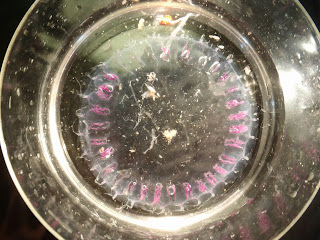The famed 30-km restricted access zone around the damaged Fukushima daiichi nuclear power plant is down – we can now go and test for contamination right up to the coast.
Still of our beloved Tansei maru (which has now changed names, to become the Kaiyo maru 3),
but staring off in Yokohama for a change, we got a wonderful view Yokohama as we sailed off under the Rainbow Bridge.
The usual scientific team, with out plankton nets and microscope,
Fishing up jellies,
and cute little fishies!
Folks looking for radio-nucleotides in water,
with their beautiful collection of bright orange trash cans,
and of course the sediment core group.
And of course, the obligatory measuring of radioactivity in the air and samples at every station.
September off the eastern coast of Japan offeterd us a first-time ever of three continuous days of oil seas, a slight, cooling breeze, and small white fluffy clouds.
We didn't have much time to enjoy it, of course, spending at least 20 hours a day working, but luckily we were also hoping to measure radioactivity in large fish, which meant crew and scientists were highly encouraged to drop a line whenever not otherwhise engaged.
The Fukushima daiichi nuclear plant, as seen from about 2 km offshore.
You are probably expecting a whole load of inside information about what the 'news' is hiding from us. I think the main point they are 'hiding', or perhaps not totally conveying, is how monstrously huge the plant is.
In terms of radioactive contamination, while the waters found inside the breakwaters outside the plant can probably shoot the needle of any geiger counter, we measured no radioactive rates, anywhere, that would not take several hundred years of continuous exposure to reach 'risk' levels.
And that's of course the root of many misconceptions. Yes, we can measure radioactive contamination – making measuring devices so sensitive you can hardly even find a use for them is the job of a lot of very proud engineers that you wouldn't want to see upset – but we can measure radioactivity everywhere, in everything. It doesn't actually mean, well, anything.... except that the geiger counters are very good indeed. So let's just sit back and enjoy the sunset!


















No comments:
Post a Comment